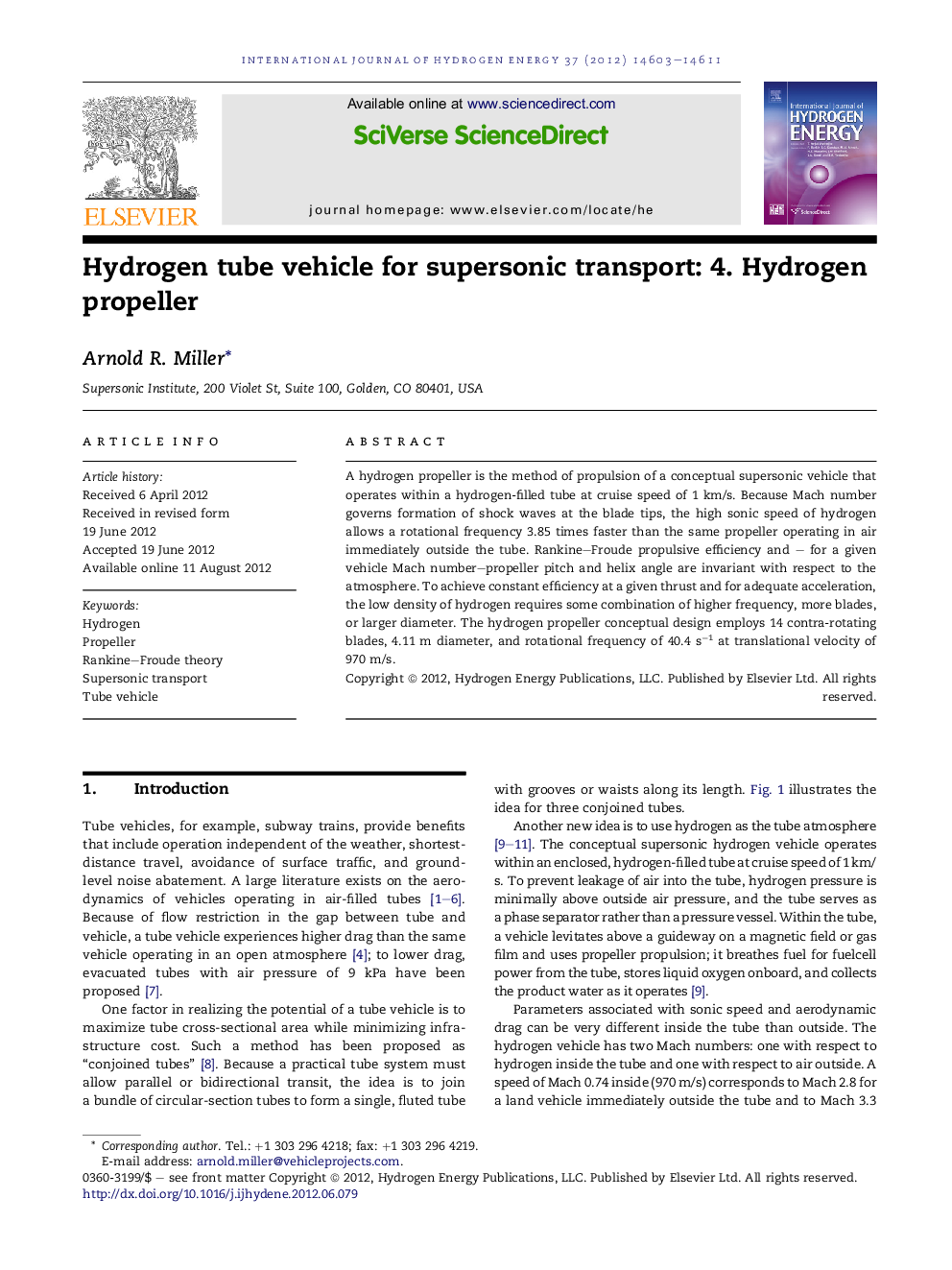| Article ID | Journal | Published Year | Pages | File Type |
|---|---|---|---|---|
| 1274809 | International Journal of Hydrogen Energy | 2012 | 9 Pages |
A hydrogen propeller is the method of propulsion of a conceptual supersonic vehicle that operates within a hydrogen-filled tube at cruise speed of 1 km/s. Because Mach number governs formation of shock waves at the blade tips, the high sonic speed of hydrogen allows a rotational frequency 3.85 times faster than the same propeller operating in air immediately outside the tube. Rankine–Froude propulsive efficiency and – for a given vehicle Mach number–propeller pitch and helix angle are invariant with respect to the atmosphere. To achieve constant efficiency at a given thrust and for adequate acceleration, the low density of hydrogen requires some combination of higher frequency, more blades, or larger diameter. The hydrogen propeller conceptual design employs 14 contra-rotating blades, 4.11 m diameter, and rotational frequency of 40.4 s−1 at translational velocity of 970 m/s.
► A hydrogen propeller drives a supersonic vehicle operating within a hydrogen tube. ► Sonic speed of hydrogen allows much higher rotational frequency than air propeller. ► Derived Rankine–Froude propulsive efficiency is the same in hydrogen as in air. ► Pitch and helix angle are invariant with respect to atmosphere. ► Propeller design has 14 blades, 4.11 m diameter, frequency of 40.4 s−1 at 970 m/s.
